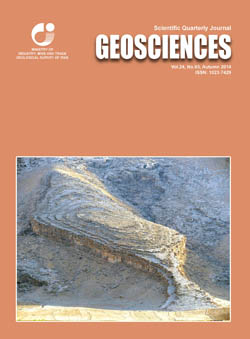Document Type : Original Research Paper
Authors
1 M.Sc., Research Institute for Earth Sciences, Geological Survey of Iran, Tehran, Iran.
2 Ph.D., Geological Survey of Iran, Tehran, Iran.
Abstract
The Zagros fold-thrust belt is a young orogenic belt which is characterized by extensive folding in its sedimentary cover, and abundance of earthquakes in which, intends to inner parts of Zagros like a band. The Lar anticline is one of the active folds in this belt which is situated in the coastal Fars arc of the Zagros simple folded belt and intends to inner parts. Earthquakes have several times destroyed Lar town in the northeast of this structure. The most important event was 1960 earthquake (mb~6.0) that caused lots of destruction and casualties. The nearest fault to Lar town, which probably caused this earthquake, was the Lar fault. In order to illustrate the geometry of the Lar fault-related fold a structural cross section with ~27 km length was prepared. Percentage of total shortening along the cross-section obtained 17.3 % which is equal to 4.6 km. The maximum amount of this shortening equals to 15 % (~4 km) has been absorbed by the Lar anticline. Geometrical comparison between the Lar anticline and fault propagation fold models showed that the Lar anticline kinematically corresponds to a fixed axial surface fault propagation fold that associated with thinning in its forelimb. Investigations showed that the Lar anticline is a mature fault propagation fold, which its core is converting to an immature fault bend fold. This kinematic reorganization has led to elimination of the low viscosity Hormuz salt from anticline core and elimination of the low viscosity units in turn has led to changing ductile behaviour to rigid behaviour. According to the structural cross section, such a mechanical behaviour in the Lar anticline can occur in contact boundary of the Paleozoic rocks in anticline core which can lead to seismic potential increase in the sedimentary cover. So, it is expected that the depth of 1960 earthquake was low (6-9 km) and occurred in the core of the Lar anticline, in relation to its rigid mechanical behaviour. By using geometric equations, we showed that long term relative shortening rate for the Lar anticline is 2 ± 1 mm/yr which is associated with 4±1 mm/yr average slip rate upon the Lar fault.
Keywords

